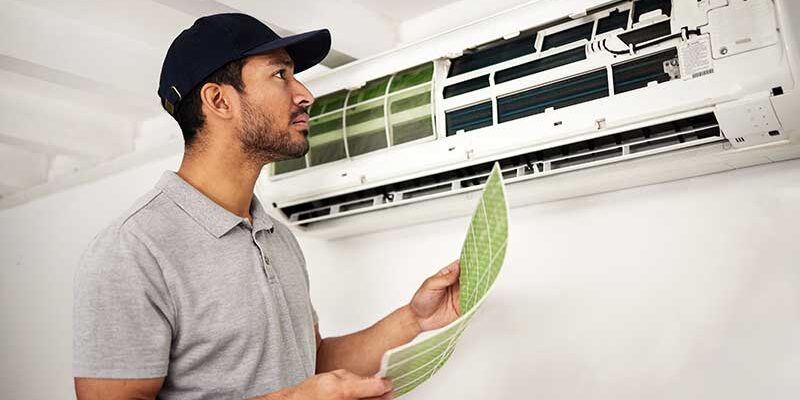Mold development in air conditioning systems is more than simply a nuisance; it can also offer major health hazards, such as respiratory problems and allergic responses. Fortunately, with careful care and maintenance, you can keep mold from colonizing your air conditioning system. This article discusses practical ways for keeping your air conditioning unit mold-free, resulting in a better interior atmosphere and more efficient system functioning.
Maintain appropriate humidity levels
Mold thrives in damp settings, therefore regulating interior humidity is critical for preventing mold growth in your air conditioning system.
- Ideal Humidity Levels: Keep indoor humidity between 30% and 50%. This range is effective for preventing mold growth while also being pleasant for most people.
- Use a dehumidifier. In extremely humid locations or during moist seasons, a dehumidifier can help you maintain the ideal humidity levels in your house.
- Regular checks: Use a hygrometer to regularly check the humidity levels in your home. To maintain a healthy balance, adjust the settings for your air conditioner or dehumidifier.
Ensure proper ventilation
Good ventilation helps to prevent mold formation by reducing moisture levels and increasing air quality.
- Install and use exhaust fans, particularly in high-moisture areas such as bathrooms and kitchens, to assist remove excess moisture and keep it from flowing through your air conditioning system.
- Open Windows: Open windows whenever possible to allow fresh air to circulate throughout the house, which reduces dampness and dilutes indoor airborne contaminants such as mold spores.
Regular cleaning and maintenance of air conditioning units
Keeping your air conditioning unit clean and well-maintained is one of the most efficient strategies to prevent mold formation.
- Change or clean your filters on a regular basis. Dirty filters can house mold spores and other allergens. Replace or clean your air conditioning filters every 30 to 90 days, depending on consumption and environmental conditions such as pet hair and dust.
- Clean Drip Pans and Drain Lines: Check that the AC unit’s drip pans and drain lines are clean. Standing water in drip pans can provide a growing environment for mold.
- Schedule annual maintenance. Have your air conditioner serviced by a competent technician once a year. They may thoroughly inspect and clean the coils and other components where mold may grow.
Use mold-inhibiting products
Consider using items that prevent mold growth in air conditioning systems.
- Mold-Resistant Filters: Some air filters contain antimicrobial chemicals to inhibit mold growth. If you live in a humid climate, consider upgrading to these filters.
- UV Light Systems: Installing UV light systems in the ductwork or near your air conditioner’s coils can help destroy mold and germs, reducing their growth and spread.
Educate yourself on the signs of mold
Recognizing the early signs of mold might help you handle the problem before it worsens.
- Musty Odors: A musty or moldy smell is sometimes the first sign of mold growth.
- Visible Mold: Inspect your AC system’s accessible parts on a regular basis for visible mold. Areas with black, green, or white flecks are particularly concerning.
- Health Symptoms: If you or your family members develop unexplained allergies or respiratory problems, it could be a result of mold exposure from your air conditioning system.
Mold prevention in your air conditioning system is critical for maintaining air quality as well as your family’s health and comfort. You may create a safer, healthier living environment by controlling humidity levels, ensuring appropriate ventilation, doing regular maintenance, using mold-inhibiting solutions, and keeping an eye out for mold growth. Start using these methods today to protect your home and air conditioning investment from mold damage.




